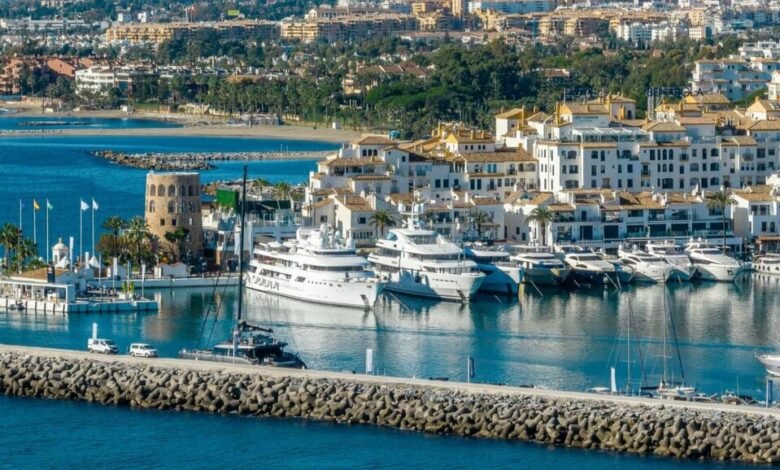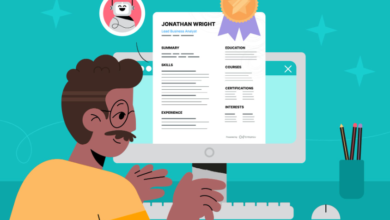Relocating to Southern Spain: Settling Into Life Near Puerto Banús

Thinking about relocating to Southern Spain? Few places blend Mediterranean luxury, year‑round sunshine, and everyday convenience like the area around Puerto Banús in Marbella. This guide explains how to settle in smoothly—covering visas, housing, schools, healthcare, costs, and the cultural essentials that make life here work day to day.
Start your search here: Property for Sale in Puerto Banús
Why Relocating to Southern Spain Near Puerto Banús Is Different
Puerto Banús sits on Marbella’s “Golden Mile,” backed by the La Concha mountain and facing sheltered beaches. This creates a microclimate with roughly 320 sunny days a year, mild winters, and a lifestyle that balances glamour with practicality. You’ll find high‑end dining and designer boutiques next to neighborhood tapas bars, local markets, golf courses, and family‑friendly promenades. English is widely spoken, but daily life runs on Andalusian rhythms—late lunches, long evenings, and a strong sense of community.
Key facts:
- Approximate drive to Málaga Airport: 40–45 minutes.
- Peak season (June–September) sees rent and traffic increase sharply.
- Active expat communities: UK, Scandinavia, Benelux, Middle East, and Latin America.
“Marbella is a pueblo that learned to host the world”—a local saying that captures the area’s international yet village‑like feel.
Visas, Residency, and Practicalities for Relocating to Southern Spain: Settling Into Life Near Puerto Banús
Residency Pathways and Legal Setup
- EU/EEA/Swiss citizens: Can live and work freely; register locally and obtain a NIE (foreigner ID number).
- Non‑EU (including UK post‑Brexit):
- Non‑Lucrative Visa: For retirees or those with passive income.
- Digital Nomad Visa: For remote workers with qualifying contracts and income.
- Entrepreneur/Startup Visa and Student Visa: For business builders and study.
- Investor Route (“Golden Visa”): Property‑based route has been under government review—check the latest before applying.
- Essential admin sequence:
- NIE number
- Empadronamiento (town hall registration)
- Health coverage (public eligibility or private insurance)
- TIE card (if required)
- Spanish bank account
Tip: Always verify current visa rules and book appointments in advance; slots fill quickly in Málaga province.
Taxes and Buying Property Basics
- Resale properties: Transfer Tax (ITP) in Andalusia is generally a flat 7%.
- New build: VAT (IVA) 10% plus Stamp Duty (AJD) typically around 1.2%.
- Typical extras: Notary, registry, legal fees, and valuation—budget 10–13% total purchase costs.
- Annual owner costs:
- IBI (municipal property tax)
- Basura (waste collection)
- Comunidad (community fees if in a development)
- Working in Spain:
- Autónomo (self‑employed) registration, social security contributions
- Consider the special expat tax regime (“Beckham Law”) if eligible, offering a flat rate for limited years.
Housing and Neighborhoods Around Puerto Banús
Where to Live Near Puerto Banús
- Nueva Andalucía (Golf Valley): Villas and apartments by Aloha, Las Brisas, and Los Naranjos courses; popular with families and golfers.
- Puerto Banús Marina: Walk-to-everything convenience, luxury apartments, lively nightlife.
- San Pedro de Alcántara: Family‑friendly, beach promenade, schools, more local feel.
- Guadalmina and Casasola: Larger plots, quieter streets, golf, and beach access.
- Marbella Center/Golden Mile: Classic convenience, premium addresses, and beachside living.
- La Quinta/Benahavís area: Green views, modern developments, slightly cooler temperatures in summer.
Price snapshot (indicative):
- Long‑term rents: 1‑bed from €1,200–€2,000; 2–3‑bed €1,800–€4,000+ monthly depending on season and proximity to the port.
- Purchases: Quality apartments often €4,500–€8,000+ per m² near Puerto Banús; prime penthouses/villas significantly higher.
Renting vs. Buying When Settling Into Life Near Puerto Banús
- Renting first helps you test micro‑areas, noise levels, sun orientation, parking, and community rules.
- Yearly leases (“larga temporada”) offer best value; avoid paying high summer weekly rates for long stays.
- When buying, check:
- Community bylaws (short‑term rentals allowed?)
- Building health (facade, lifts, plumbing)
- Orientation (afternoon sun vs. summer heat)
- Noise from clubs or seasonal traffic
- Future developments or road changes
Cost of Living Snapshot
Monthly estimates for a couple (varies by lifestyle and season):
- Rent: €1,800–€3,500+
- Utilities (electricity, water, fiber): €150–€300
- Groceries: €350–€700
- Eating out: €250–€600
- Private health insurance: €100–€300
- Car (fuel/insurance/parking): €150–€350
- Schooling (if applicable): International school fees often €6,000–€20,000 per child per year.
Money‑saving tips:
- Dine menú del día lunches.
- Use local markets for produce and fish.
- Opt for annual gym/golf memberships for discounts.
- Lock in off‑season rental rates.
Daily Life: Healthcare, Schools, Transport, Safety
Healthcare When Relocating to Southern Spain: Settling Into Life Near Puerto Banús
- Public system: Andalusia’s SAS network; eligibility depends on residency and social security contributions.
- Private clinics/hospitals: Widely available in Marbella, multilingual staff.
- Insurance: Comprehensive private plans commonly €50–€200 per person monthly depending on age and coverage.
- Pharmacies are accessible and offer extended hours; many over‑the‑counter solutions.
Schools and Childcare
- International schools (English, bilingual, Scandinavian, German, French options) from early years to IB/A‑Levels.
- Admissions can fill up; apply early and plan transport routes.
- Extracurriculars: Sailing, tennis, padel, golf, coding, and languages.
Getting Around
- Car ownership is practical; parking underground in popular zones is a plus.
- Main roads: A‑7 (coast road) and AP‑7 (toll) reduce travel time in peak hours.
- Airport: Málaga (AGP) ~45 minutes; Gibraltar (GIB) also an option.
- Public transport: Buses link Marbella, San Pedro, and Málaga; taxis and ride‑hailing readily available.
- Cycling and walking: Beach promenades are excellent; use caution on main roads.
Safety
- Generally safe and well‑policed. Petty theft can spike in peak season—use underground parking, avoid leaving valuables visible, and secure windows/terraces.
Culture and Lifestyle Near Puerto Banús
- Eating hours: Lunch 2–4 pm, dinner from 9 pm. Book ahead in summer.
- Beach clubs and chiringuitos contrast with family tapas bars and traditional ventas in the hills.
- Sports: Golf, padel, tennis, hiking La Concha, sailing, and kite‑surfing (Tarifa day trips).
- Language: Learning basic Spanish opens doors. A few phrases at the mercado go a long way.
- Fiestas: Semana Santa, Feria de San Bernabé, and Three Kings add color to the calendar.
Working and Doing Business Near Puerto Banús
- Internet: Fiber connections typically 600–1,000 Mbps in and around Marbella.
- Coworking spaces: Abundant, with networking events for entrepreneurs and remote workers.
- Business hours: Many offices pause 2–5 pm; government offices follow strict appointment systems.
- Autónomo setup: Factor social security contributions and quarterly tax filings (IVA/IRPF).
Pro tip: Keep digital and paper copies of all documents. A neat folder often speeds up administrative visits.
Relocation Timeline and Checklist
- 3–6 months out:
- Research visas; book consulate appointments
- Gather apostilled documents and translations
- Budget and shortlist neighborhoods
- 2–3 months out:
- Apply for NIE (if possible) and open a Spanish bank account
- Compare private health insurance plans
- Start school applications
- 1–2 months out:
- Arrange temporary accommodation off‑season for better rates
- View properties and check commute, noise, sun patterns
- Prepare funds for deposits and purchase costs
- Arrival:
- Empadronamiento at town hall
- TIE card (if applicable)
- Set up utilities, fiber internet, and waste collection
- Register with healthcare and get local SIMs
Common Mistakes to Avoid When Settling Into Life Near Puerto Banús
- Renting in July/August without seeing winter conditions—sun angle and humidity change.
- Ignoring community fees and rules (especially for short‑term letting).
- Underestimating parking and seasonal traffic near the marina.
- Skipping a building survey for older properties.
- Missing school deadlines and assuming places are guaranteed.
- Forgetting to check mobile and fiber coverage in hillside areas.
Final Thoughts on Relocating to Southern Spain: Settling Into Life Near Puerto Banús
Relocating to Southern Spain and settling into life near Puerto Banús is about balance: beach and mountain, luxury and local, leisure and logistics. If you prepare your paperwork, trial neighborhoods in the off‑season, and budget for true running costs, you’ll find an easy rhythm—morning coffee on the paseo, a productive workday with fast fiber, and sunset walks as the marina lights up. It’s a lifestyle that rewards planning—and then invites you to slow down.




